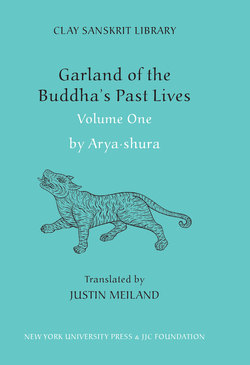Читать книгу Garland of the Buddha’s Past Lives (Volume 1) - Aryashura - Страница 18
На сайте Литреса книга снята с продажи.
Оглавлениеground leads to the commencement of the plot. Usually, but not always, the story concludes by restating the opening maxim. Finally, most of the stories have an epilogue that instructs monks as to the proper occasion for reciting the tales. While scholars may be tempted to see these epilogues as interpolations, they are found in all extant manuscripts. Moreover, since they offer an important glimpse of how the stories might have been used pedagogically by monks, I have decided to keep them in the translation.
The “Garland of the Buddha’s Past Lives” is composed in an elegant mixture of verse and prose known as campu. Although Arya·shura’s text is not the earliest example we have of this genre (fragments survive of a text from the second century ce called the Kalpanamanditika Drstantapankti by Kumara·lata), it is the first time that campu reaches such a high level of refinement, leading to its praise by Indian aesthetic theorists (Khoroche 1989: xvi). While the Sanskrit is simple and clear, and the ornamentation light compared to later authors, the “Garland of the Buddha’s Past Lives” is conspicuous for the variety of its poetic meters, the wealth of its vocabulary, and the sophistication of its literary devices in both verse and prose. It is beyond the scope of this introduction to cover the range of techniques employed by Arya·shura,14 including a deft treatment of metaphor, but as an example of his artistry, one might cite his use of sikha, a particular variety of yamaka (repetition or echo), whereby the second half of each quarter verse repeats the same syllables:
